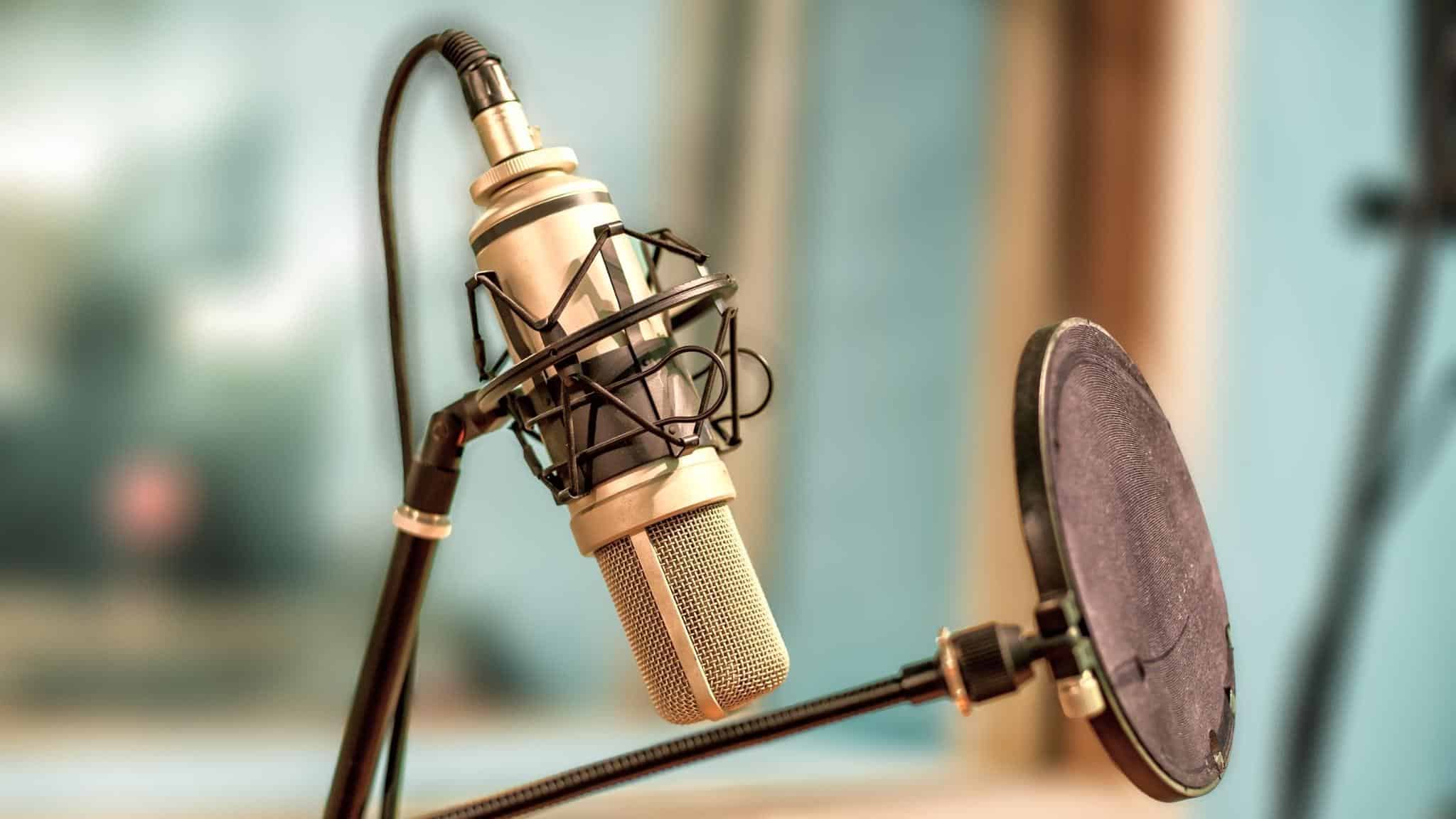Do you hate the sound of ‘P’ and ‘S’ sounds in your recordings?
That’s EXACTLY why you need a pop filter!
They’re placed in front of the mic and not only will they help with the sound of your recordings, but it is also very affordable and easy to find!
Let’s talk about what they do and say goodbye to those pesky ‘P’ and ‘S’ sounds!

Anyone who records themselves or someone else speaking knows that those ‘P’ and ‘S’ sounds create a hissing sound in the recording. This can easily be eliminated by using a pop filter.
What are pop filters and what do they do?
Pop filters, also known as popscreens or microphone screens, are a screen that is placed in front of the mic to help eliminate popping sounds from your recordings. These ‘P’ and ‘S’ sounds, can be very distracting and irritating for listeners when they occur in your recordings.
By using a pop filter, you can help to reduce or eliminate these sounds, making for a much cleaner and more enjoyable recording.
Fine mesh metal screen
The most common type of pop filter is made from a fine mesh metal screen. This type of filter is placed over the microphone to help deflect or absorb the popping or plosive sounds before they hit the microphone capsule.
This can be an effective way to reduce or eliminate popping sounds.
The screen blocks air blasts
When you sing inconsistently (and everyone does) bursts of air escape your mouth every now and again.
To prevent these from popping into the mic and making a mess of your recording, you need a pop filter.
A pop filter sits in front of your microphone and blocks these blasts of air before they hit the capsule. This results in a cleaner recording with fewer popping sounds.
Direct sound to the mic
It also helps to direct your voice toward the microphone, which can further improve the sound of your recordings.
Pop filters are an essential tool for anyone who records audio, as they help to ensure quality and clarity in your recordings.
Whether you are recording a podcast, a YouTube video, or recording your next album.
How to use a pop filter?
To use a pop filter, you simply need to place the cloth in front of the microphone and adjust it so that it sits directly in front of the sound source.
You may need to experiment with different positions and angles until you find a setting that works well for your recording needs.
Some pop filters are also adjustable, allowing you to change the positioning to fit different microphones or recording situations.
How to attach a pop filter
There are a few different ways to attach a pop filter to your microphone. The most common method is to use a clip that attaches to the mic stand and holds the filter in place.
You can also find pop filters that come with their own stand or mount, which can be helpful if you plan on using the filter with multiple microphones or recording devices.
Some pop filters can also be attached directly to the mic itself, either with a screw or an adhesive. When choosing a pop filter, it’s important to consider how you plan to use it and find one that fits your needs and setup.
Flexible mounting bracket
Another option for attaching a pop filter is with a flexible mounting bracket. This type of mount allows you to easily position and adjust the pop filter, making it a versatile choice for any recording situation.
These brackets are typically made from durable, lightweight materials that won’t weigh down your mic or cause any interference with your recordings.
They also come in a variety of sizes to fit different microphones, so you can find one that’s just right for your needs.
Pop filter distance from the microphone
The distance between the pop filter and the microphone will depend on a number of different factors, such as the type of mic used, the specific recording situation, and your personal preferences.
Generally speaking, you should place the pop filter as close to the sound source as possible without obstructing or covering it.
Depending on your setup, this may mean moving the pop filter a few inches or several feet away from the mic.
As you experiment with different distances, pay attention to how it affects your recordings and adjust as needed to find a setting that works well for you.
Are pop filters necessary?
While pop filters are not strictly necessary, they can be a helpful tool for anyone who records audio on a regular basis.
If you find that your recordings are plagued by unwanted popping sounds, then a pop filter may be a good solution for you.
Pop filters are relatively inexpensive and easy to use, so they’re worth considering if you want to improve the quality of your recordings.
Does pop filter quality matter?
When it comes to pop filters, quality can vary greatly from one product to the next. In general, higher-quality pop filters will be made from thicker and more durable materials that can better withstand repeated use.
They may also come with features that make them easier to use, such as adjustable clips or mounts. If you plan on using your pop filter regularly, it’s worth investing in a quality product that will last.
Conclusion
Now you see why you might need a pop filter for your next vocal recordings.
I'm Joost Nusselder, the founder of Neaera and a content marketer, dad, and love trying out new equipment with guitar at the heart of my passion, and together with my team, I've been creating in-depth blog articles since 2020 to help loyal readers with recording and guitar tips.

